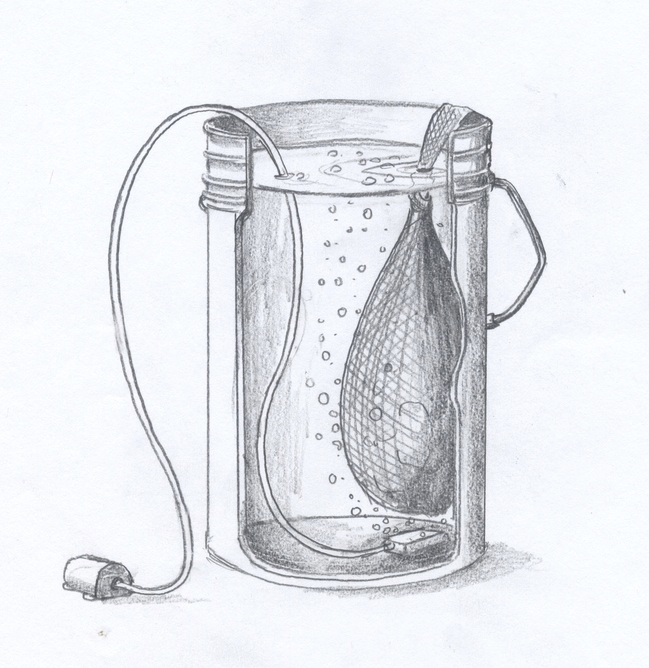[From the August 2013 issue of the UC IPM Green Bulletin newsletter]
What is compost tea? Is it a good nutrient source? Can it suppress plant disease?
The fundamentals of compost tea are very simple: it's merely compost suspended in a porous bag (like cheesecloth) and soaked in water. If the compost was of good quality, then the water typically takes on a dark, blackish color (appearing a lot like a strong black tea). However, compost tea quality depends on the quality of the parent compost, and compost can vary quite a bit in its makeup, depending upon what went into it and how it was processed.
Many claims are made for compost tea, including uses as a fertilizer and as a disease suppressant. Some of these claims are realistic, others rather fanciful. Since compost tea is basically a leached solution of compost, it often has many of the beneficial characteristics of that compost, but not always.
One of the benefits that compost tea imparts to the water is its nutrient content. Compost tea can work well as a liquid fertilizer, and in many instances some of the nutrients it contains can be taken up directly by the leaves of the plant, before the tea even reaches the ground. However, concerns about other liquid fertilizers apply to compost tea as well. Only as much compost tea should be applied as plants can absorb. Any more than this is likely to result in those same nutrients leaching into ground or surface waters. Any over-application of nutrients constitutes environmental pollution, regardless of whether it was from a natural or a synthetic source.
A simple search on the internet will unveil other claims for compost tea, including its purported ability to cure diseases. In order to address this claim, we must differentiate between two compost tea types: Aerated Compost Tea (ACT) and Non-aerated Compost Tea (NCT). Non-aerated tea can simply be made in a bag, as described above. Aerated compost tea is typically made in a vat with an agitator to insure an even oxygen distribution as it's made. To date, there are no peer-reviewed scientific studies that show that ACT reliably cures any disease, despite dozens of research projects aimed at investigating this over the past few decades.
Most of these failed studies were never published, presumably because they were viewed as failures by the investigators when ACT performed the same as water. In some instances, ACTs have actually been shown to increase disease severity on the plants they were applied to. There are also many studies that appear to show compost tea as effective, but most have serious flaws in experimental design. These are typically published in non-peer-reviewed journals where there is less scrutiny of experimental procedures. Non-aerated compost teas have a research record that is only slightly better, resulting in mild but consistently measurable suppressant effects on a few foliar plant diseases.
Regardless of these claims, compost teas are not registered as pesticides, so they cannot legally be applied to control insects or biotic diseases in a landscape setting. This is because in order to obtain registration in California, the product has to be shown to be consistently effective. Consistency can be hard to demonstrate for a biological product that may contain many different strains of fungi and bacteria, even if the parent material is relatively consistent, since weather plays a role in how compost develops.
This is not to say that compost teas don't have a place in the landscaper's toolbox; all current research to date shows compost tea to be a good natural delivery tool for a quick boost of nutrients. As such, applicators should take care to use compost teas in a judicious manner. Plain old compost, not the tea, typically acts to release those same nutrients in a slower manner, plus it has the added benefits of cooling and cushioning the soil. So to really get the most out of your compost, perhaps it's best to apply it to the landscape, and let nature make the tea with rain or irrigation water, unless you have a specific need for a quick boost, and are sure you know how much to use.

Fig. 1. Typical aerated compost tea set up. Compost is placed in cheesecloth or burlap bag and immersed in a container of water until the water becomes dark. Water may be aerated with an aquarium pump as shown here or produced without aeration.
This article was originally published in the August 2013 issue of the UC IPM Green Bulletin. See this and other articles at http://www.ipm.ucdavis.edu/greenbulletin/index.html.